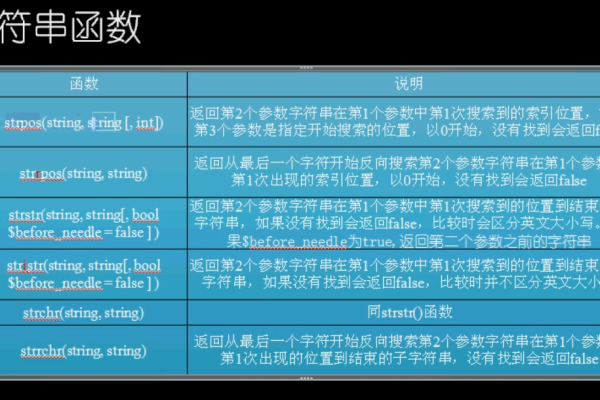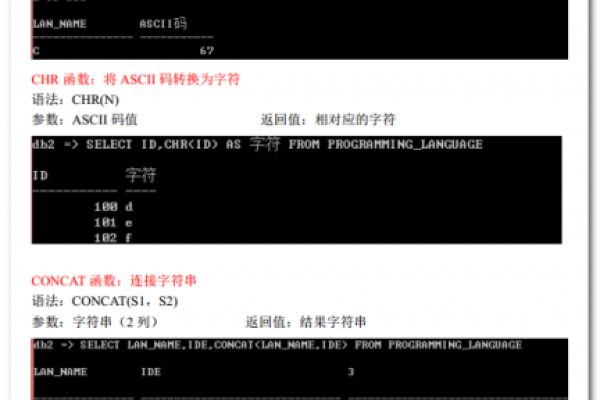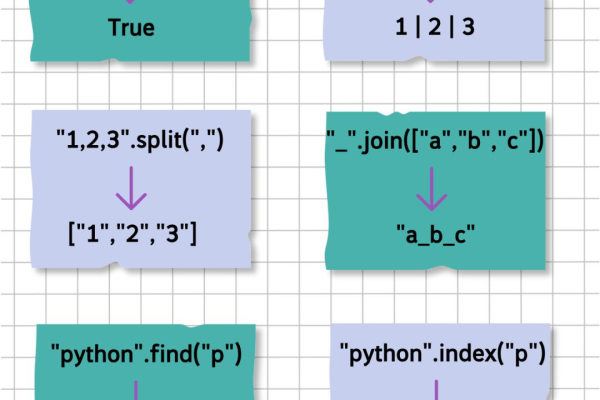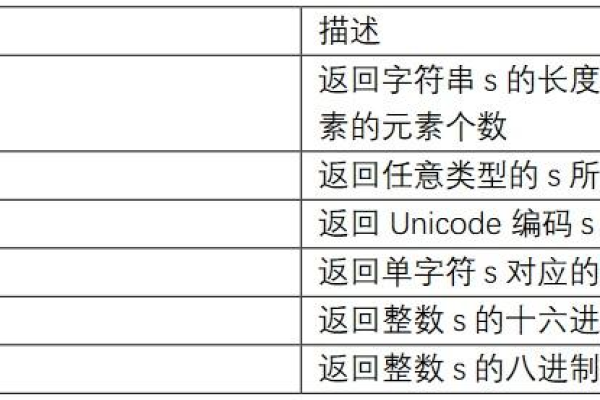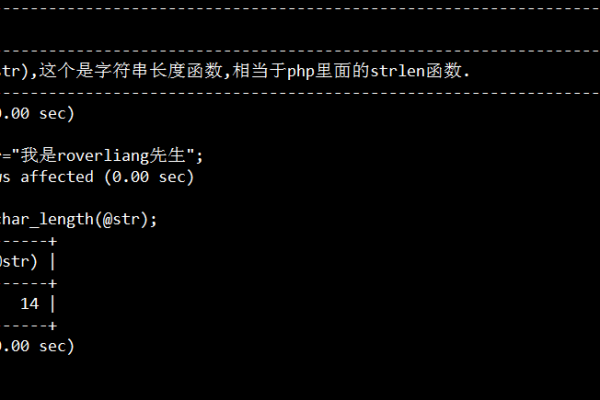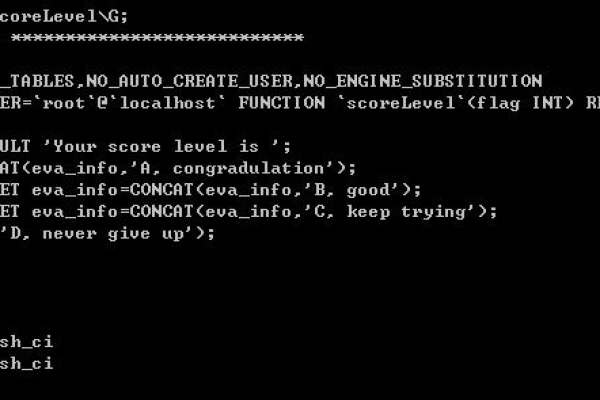python字符串函数
- 行业动态
- 2024-02-08
- 4300
Python字符串函数是用于处理字符串的一系列内置方法,如len()、str()、format()等。
Python字符串函数
在Python中,字符串是最常用的数据类型之一,为了方便地操作和处理字符串,Python提供了许多内置的字符串函数,本文将介绍一些常用的Python字符串函数,包括字符串的创建、拼接、分割、替换、查找等操作。
1、字符串的创建
在Python中,可以通过以下几种方式创建字符串:
直接使用双引号或单引号括起来的文本,如:s1 = "hello" 或 s2 = 'world'
使用三引号括起来的多行文本,如:
s3 = """ line1 line2 line3 """
使用str()函数将其他类型的数据转换为字符串,如:s4 = str(123)
2、字符串的拼接
可以使用+运算符或join()方法将多个字符串拼接在一起。
s1 = "hello" s2 = "world" s3 = s1 + " " + s2 print(s3) 输出:hello world s4 = ", ".join(["apple", "banana", "cherry"]) print(s4) 输出:apple, banana, cherry
3、字符串的分割
使用split()方法可以将字符串按照指定的分隔符进行分割,返回一个字符串列表。
s = "apple, banana, cherry"
lst = s.split(", ")
print(lst) 输出:['apple', 'banana', 'cherry']
4、字符串的替换
使用replace()方法可以将字符串中的某个子串替换为另一个子串。
s = "I like cats and dogs."
s = s.replace("cats", "rabbits")
print(s) 输出:I like rabbits and dogs.
5、字符串的查找
使用find()方法可以查找子串在字符串中首次出现的位置,如果找不到则返回-1。
s = "I like cats and dogs."
pos = s.find("cats")
print(pos) 输出:7
使用index()方法也可以查找子串在字符串中首次出现的位置,但是如果找不到则会抛出ValueError异常。
s = "I like cats and dogs."
pos = s.index("cats")
print(pos) 输出:7
使用count()方法可以统计子串在字符串中出现的次数。
s = "I like cats and dogs."
count = s.count("s")
print(count) 输出:3
6、字符串的大小写转换
使用upper()方法将字符串中的所有字符转换为大写。
s = "Hello, World!" s_upper = s.upper() print(s_upper) 输出:HELLO, WORLD!
使用lower()方法将字符串中的所有字符转换为小写。
s = "Hello, World!" s_lower = s.lower() print(s_lower) 输出:hello, world!
7、字符串的格式化
使用format()方法或f-string可以将变量插入到字符串中。
name = "Alice"
age = 30
s1 = "My name is {} and I am {} years old.".format(name, age)
print(s1) 输出:My name is Alice and I am 30 years old.
s2 = f"My name is {name} and I am {age} years old."
print(s2) 输出:My name is Alice and I am 30 years old.
相关问题与解答
1、问题:如何使用replace()方法将字符串中的所有指定子串替换为另一个子串?
答案:replace()方法有两个参数,第一个参数是要被替换的子串,第二个参数是替换后的子串,如果要替换所有匹配的子串,可以使用第三个参数指定替换次数为-1。
s = "I like cats, cats are cute."
s = s.replace("cats", "rabbits", -1)
print(s) 输出:I like rabbits, rabbits are cute.
2、问题:如何使用split()方法按照多个分隔符进行分割?
答案:split()方法可以接受一个包含多个分隔符的字符串作为参数,这样就可以按照多个分隔符进行分割。
s = "apple, banana; cherry/orange"
lst = s.split(", ; /")
print(lst) 输出:['apple', 'banana', 'cherry', 'orange']
3、问题:如何使用join()方法将字符串列表连接成一个字符串?
答案:join()方法需要一个可迭代对象(如列表、元组等)作为参数,然后使用指定的分隔符将可迭代对象中的元素连接成一个字符串。
lst = ["apple", "banana", "cherry"] s = ", ".join(lst) print(s) 输出:apple, banana, cherry
4、问题:如何使用f-string将一个变量的值插入到字符串中?
答案:在字符串前加上字母f或F,然后在字符串中使用大括号{}包围变量名,这样就可以将变量的值插入到字符串中。
name = "Alice"
age = 30
s = f"My name is {name} and I am {age} years old."
print(s) 输出:My name is Alice and I am 30 years old.
本站发布或转载的文章及图片均来自网络,其原创性以及文中表达的观点和判断不代表本站,有问题联系侵删!
本文链接:http://www.xixizhuji.com/fuzhu/307639.html
